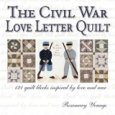Pomegranate Quilt History and Free Pattern
"...the size of the quilt (a generous 98 inches by 108 inches) resulted from Mary's promise to keep working on the quilt until the return of her sweetheart from the Civil War...."
Mary made her appliqued pomegranate and rose quilt during her long engagement while she waited for her fianc� to return from the war. She included clasped hands and hearts in the quilting to signify her marriage that would finally took place in 1861.
"Ho for California! Pioneer Women and Their Quilts",by Jean Ray Laury
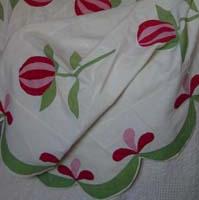 I recently bought the well worn early 20th century vintage summer spread shown to the left because it seems to express such joy to me. I've been wanting to design a pomegranate quilt ever since.
I recently bought the well worn early 20th century vintage summer spread shown to the left because it seems to express such joy to me. I've been wanting to design a pomegranate quilt ever since.
My newly acquired pomegranate quilt also aroused my curiosity about what meaning the pomegranate might have had to the quilt makers. Froncie Quinn designs patterns based on antique quilts. In researching the quilt shown to the right she found that many pomegranate quilts were associated with marriage.
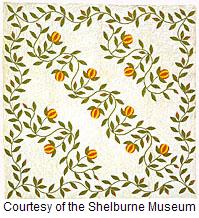 She tells us, "The pomegranate was often referred to as the 'love apple'. Jewish history shows that it was a symbol of fertility. Women also began studying botany at this time, which often led to an increased interest in recreating plants and flowers through their paintings, drawing and quilts." You can find the pattern on her site, HooplaPatterns.com. Her patterns are well worth buying as they not only include the history but also stencils for the original quilting pattern. This quilt is at the Shelburne Museum.
She tells us, "The pomegranate was often referred to as the 'love apple'. Jewish history shows that it was a symbol of fertility. Women also began studying botany at this time, which often led to an increased interest in recreating plants and flowers through their paintings, drawing and quilts." You can find the pattern on her site, HooplaPatterns.com. Her patterns are well worth buying as they not only include the history but also stencils for the original quilting pattern. This quilt is at the Shelburne Museum.
One theory as to why red and green was so dominant during the mid 19th century was that these colors were more colorfast. This was certainly true in the case of Turkey Red. Dying this fabric was time consuming and therefore expensive. But the result was colorfast unlike most dyes. But that doesn't explain the use of green. You may have seen lovely appliqued antique quilts in red and dull tan or a yuck faded yellow green. The fabric color was done by either dying yellow over blue or blue over yellow. Usually one color or the other would fade. Eventually a more colorfast green was developed but the red and green color combination had been common in home decorations as well as quilts for some time by then. Perhaps the answer is found in Froncie Quinn's quote above. The use of red and green for these quilts was a reflection of nature and floral applique was certainly imitated nature.
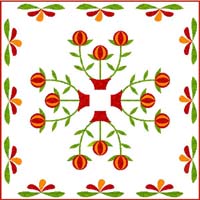
To the left is the quilt that I've designed for you. I decided to put the pattern under Civil War quilt patterns because of the marriage quilt I told about at the top of this page. It could just as well have been placed in the pioneer quilt section. Appliqued red and green quilts were popular as a "made for good" quilt though several decades of the mid 19th century. Many of these precious quilts were carried west by pioneer women. This quilt pattern could be made larger as a wedding quilt or as a wall hanging for a newlywed couple. But it's not limited to weddings, you might want to make the quilt just for the joy of it.
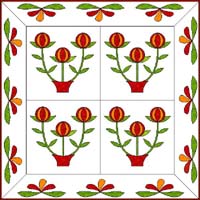
You can make this quilt on one single large piece of fabric. In this case it will be up to you to decide where to place the motifs.
For a simpler quilt you can make it as a four block quilt. Each block is 15 inches. I suggest cutting the squares a little larger as sometimes applique pulls a little and will make the block smaller. You can trim to 15 inches plus seam allowance before sewing them together.
The links for the applique templates in PDF form are at Pomegranate and Vase and for the Pomegranate Border. Be sure the page scaling is set at "none" when you print to assure the templates will be the correct size. I've found the seam allowance doesn't print out on all printers. In this case you will have to add your seam allowance if you are turning the edges.
� 2008 Judy Anne Breneman
print a printer friendly version of this page
